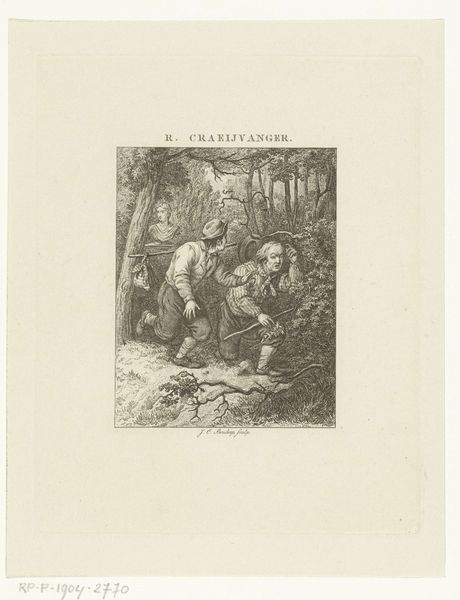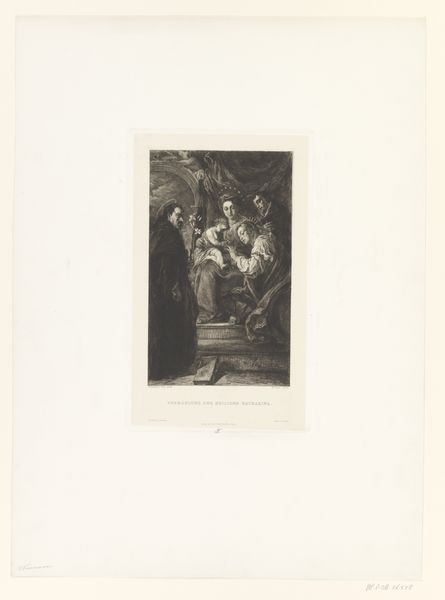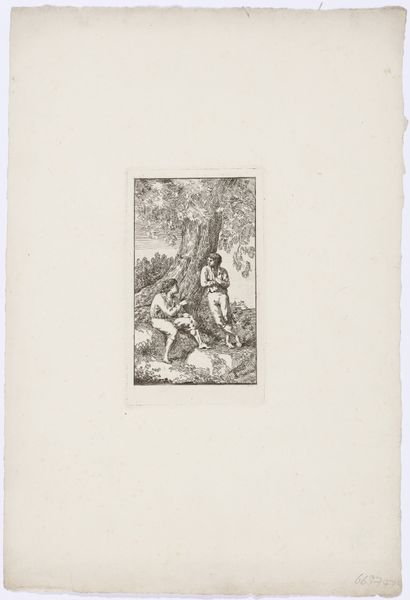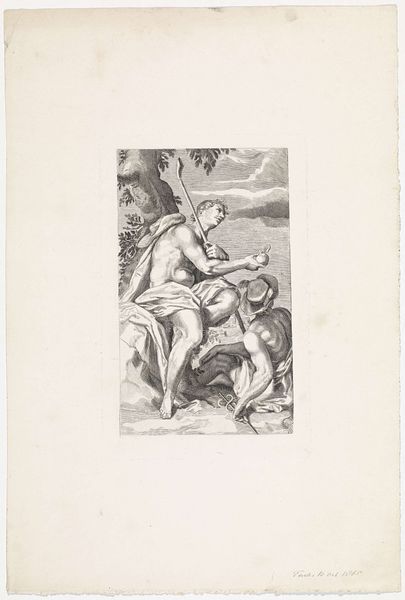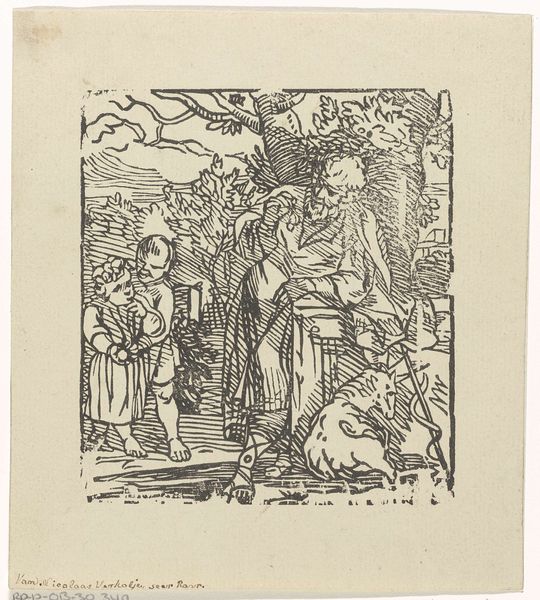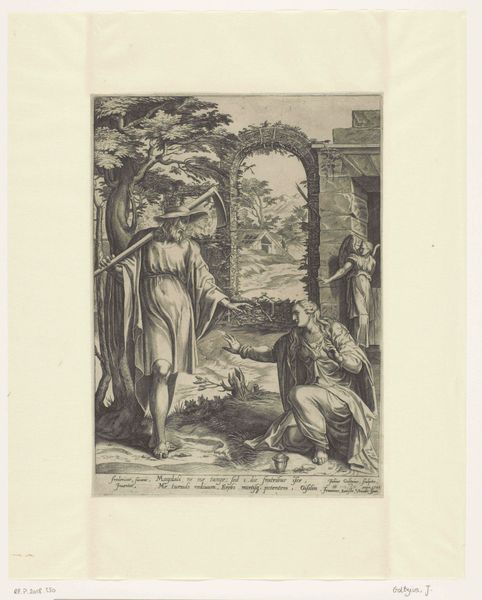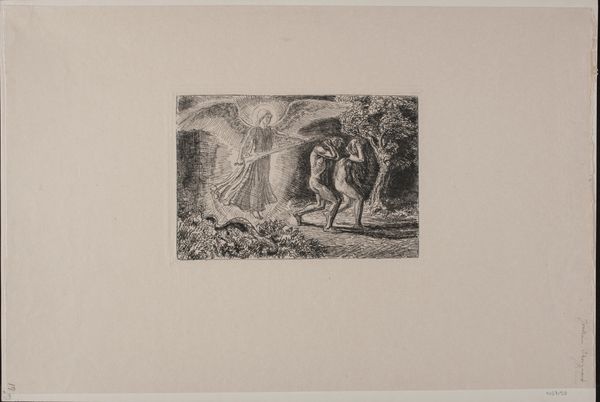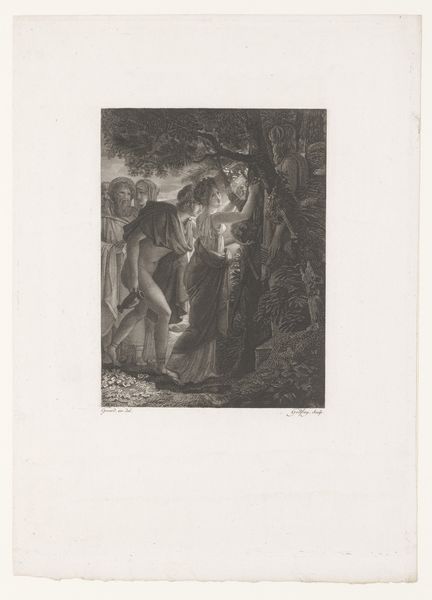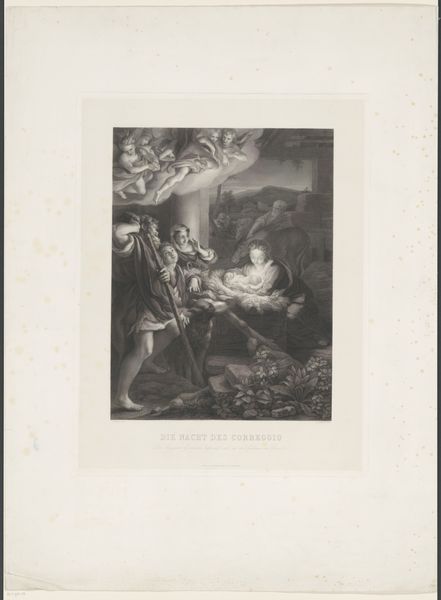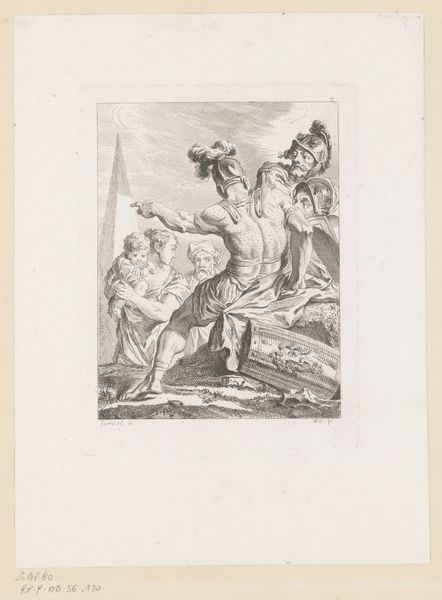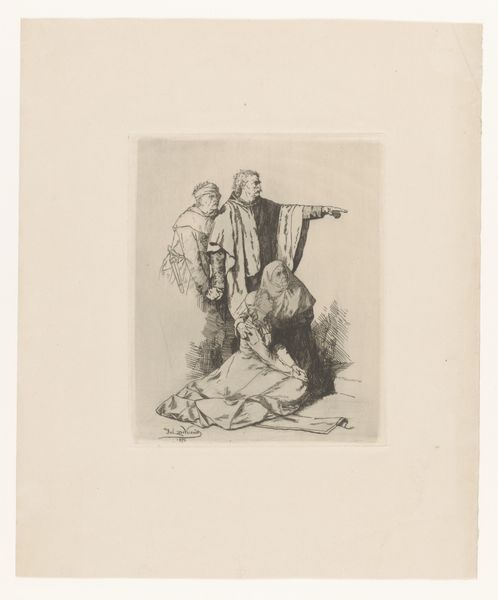
Dimensions: height 210 mm, width 168 mm
Copyright: Rijks Museum: Open Domain
Editor: Here we have Johannes Arnoldus Boland's 1874 engraving, "Adoration of the Shepherds." It feels very detailed for such a small-scale print, and almost theatrical with the way the figures are arranged. What stands out to you? Curator: Let's consider this print as a reproducible commodity within 19th-century Dutch society. How does the act of recreating an event like the Nativity through the industrialized process of engraving affect the perceived value or meaning of the spiritual narrative? Editor: That's interesting. So you're saying the choice of printmaking influences its accessibility and therefore its reception? I guess engravings democratize art and religion? Curator: Precisely. We see a move away from unique, handcrafted religious art accessible only to the wealthy elite, towards mass-produced images. Consider the implications of making a sacred scene like this so readily available. Who is consuming these images, and how does it shape their relationship with faith and art? Does it reinforce established religious dogma or challenge it? Editor: So it becomes about more than just the image itself, but how the act of printing and distribution affects its meaning. I had not considered that the actual making of art informs our interpretation. Curator: Exactly. Think about the economic forces at play, too. The labor involved, the cost of materials, the market for such prints… these elements all contribute to understanding this "Adoration" beyond its face value. Does understanding art's history as product diminish the artist's agency in representing the sacred? Editor: I never thought about approaching art this way. Thank you, I will consider materials and making when I am considering meaning from now on.
Comments
No comments
Be the first to comment and join the conversation on the ultimate creative platform.
